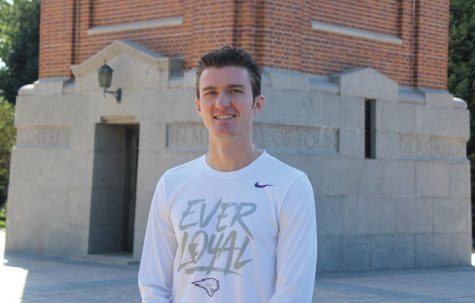Pay for play, compensate student athletes
Apr 1, 2021
The topic of the NCAA and the use of name, image and likeness (or NIL) has been in discussion for quite some time now, and after years of debate over whether college athletes should be allowed to profit off of their role should be in place or not, there is finally some traction being gained. That being said, why has it taken so long for this discussion to become more mainstream, and what will likely be the end goal of it?
Much of the debate regarding the use of NIL of college athletes comes from the fact that these athletes, especially ones who play for the Power 5 conferences (ACC, SEC, Big Ten, PAC 12 and the Big 12) are generating so much revenue for their schools that they should be compensated in some form. Mainstream college athletes and teams can be just as well-known, if not more, as professional squads and have similar cable TV contracts. Also, many collegiate football stadiums seat thousands more than the typical NFL stadium, leaving more room to generate revenue. Most casual observers know about Alabama football or Duke men’s basketball and how those programs are perennial powerhouses, but the same casual fans might not have even heard of teams like the Sacramento Kings or the Florida Panthers, both of which are professional sports teams with players making millions of dollars per year. Yet, the student-athletes who play for Duke or Alabama are paid $0 in terms of salary (aside from scholarships) while the lesser-known professionals make seven-figure salaries.
I’m of course not advocating that college athletes should be paid millions of dollars per year, but I do believe that there is an argument to be had that suggests they should receive some sort of cut from either their schools or from the NCAA. March Madness is the largest source of revenue for the NCAA each year and is one of the biggest sporting events on the calendar, garnering millions of viewers every year. Division 1 schools and conferences have massive TV broadcast deals with ESPN, Fox Sports, CBS Sports and others. Of course, every time one of these schools has a game on one of these networks, the university itself receives national spotlight and the opportunity to advertise their school to a national audience. There needs to be some sort of change that has been a long time coming.
What will happen with the recent developments? The United States Supreme Court is currently hearing oral arguments on the case of NCAA vs. Alston, which relates to a previous decision by the Court and doesn’t directly affect the issue of name, image and likeness, but it still will likely have ramifications relating to the topic down the road in the coming months and years.
Chances are that there will be change in regards to the topic, but it will most likely take several months to be decided and will probably not be implemented for another few years down the road. There will also likely need to be compromise between the NCAA and student-athletes, as the NCAA wants to be able to draw the line between amateurism and professional sports, while the side of the players feels that they need some sort of compensation, which can blur the lines of what actually constitutes a professional athlete.
The decision remains to be seen, but for now it appears that the wheels are in motion for there to be a positive change in the future.








